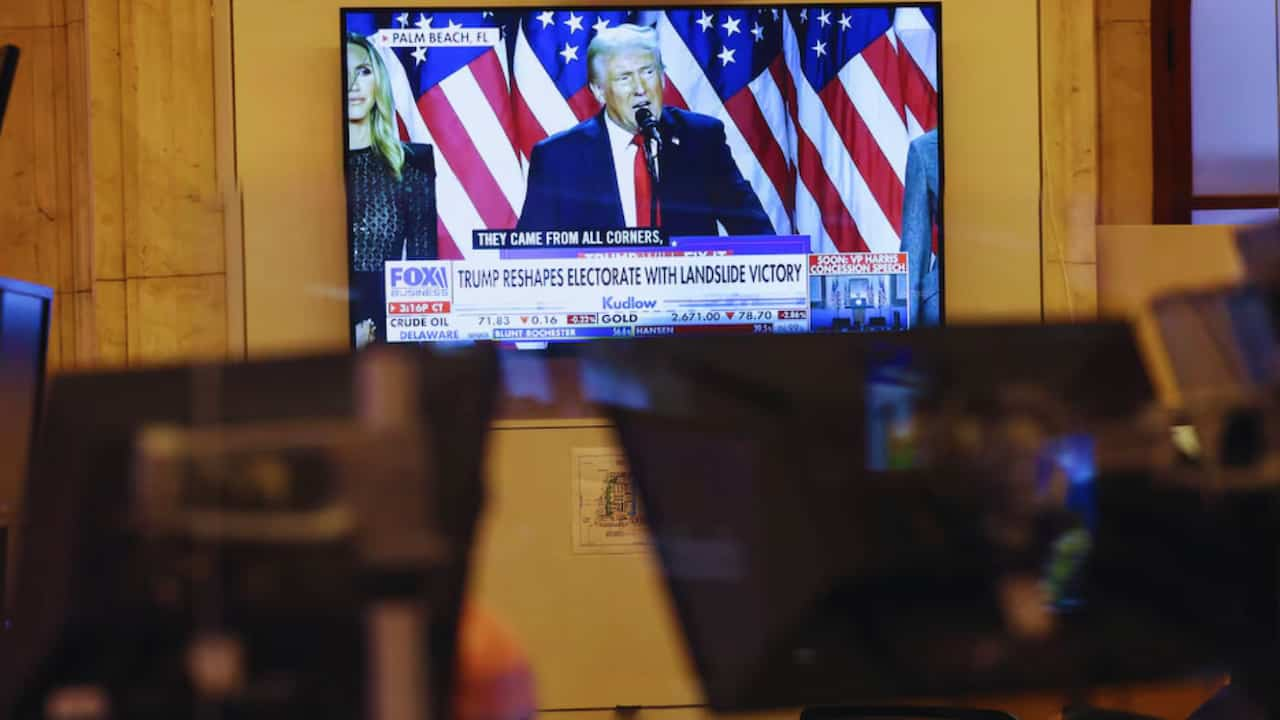Wall Street’s Post-Election Reality Check: Markets Navigate Trump’s Return
Despite the initial jubilation on Wall Street following Donald Trump’s victory in the 2024 presidential election, the celebration appears to be encountering some obstacles. As a seasoned market observer, I’ve watched the dramatic shifts unfold in the past weeks, revealing a complex picture of both opportunity and uncertainty.
The numbers tell an intriguing story. The S&P 500 initially surged in a post-election rally, with investors betting big on Trump’s pro-growth agenda. However, the excitement has cooled noticeably, with the index dropping 2% in the past week—erasing more than half of its post-election gains. Despite this pullback, it’s worth noting that the market remains up an impressive 23% for the year.
Investor confidence is currently being tested by several key factors:
Rising bond yields create headaches. The 10-year Treasury yield has become a major concern, reaching its highest level in over five months. This surge isn’t just a number on a screen—it represents real competition for stocks and could make borrowing more expensive for both companies and consumers.
Last Friday, when yields reached 4.5%, it caused a ripple effect in the market, as many investors perceive this level as a potential catalyst for stock market instability.
Policy Uncertainty Rattles Specific Sectors Trump’s cabinet picks and policy directions are already shaking up certain industries. Pharmaceutical giants like Pfizer and Moderna saw their shares drop after Trump named vaccine skeptic Robert F. Kennedy Jr. to lead Health and Human Services. Elon Musk, the CEO of Tesla, led a new government efficiency initiative, causing a stir among defense contractors and government service providers.
International Investment Flows Interestingly, Wall Street insiders suggest that India could emerge as the second most attractive destination for global investments during Trump’s second term, right behind the United States. This hints at potential shifts in global investment patterns that could reshape market dynamics.
Market bright spots remain. It’s not all doom and gloom. Some “Trump trades” are flourishing—Tesla’s shares have jumped 28% since Election Day, while Bitcoin has surged over 30%, buoyed by hopes of cryptocurrency deregulation. The broader market also has history on its side: the S&P 500 typically gains about 3.3% in the final two months of presidential election years.
Looking Ahead The market faces several key questions:
- Will Trump’s policies spark inflation and push yields even higher?
- How will his trade policies, particularly regarding China and the EU, impact global markets?
- Can strong corporate earnings and economic growth overcome policy uncertainties?
The path forward isn’t clear-cut. While Trump has promised his policies will revitalize American manufacturing and generate enough revenue to address deficit concerns, skepticism remains. As Paul Nolte of Murphy & Sylvest Wealth Management notes, “I’m skeptical that it’s going to be that easy.”
For investors, the message seems clear: while the initial post-election euphoria may be fading, the underlying market fundamentals remain strong. Corporate earnings continue to impress, and economic growth remains robust. However, staying alert to policy shifts and their market implications will be crucial in the months ahead.
As we navigate this new chapter in American markets, one thing is certain: the intersection of politics and finance will continue to provide both challenges and opportunities for investors willing to look beyond the headlines.
